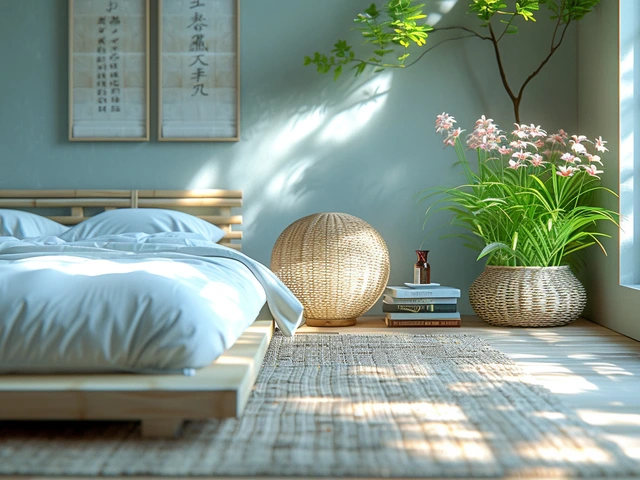Unlocking Wellness: The Complete Guide to Acupressure for Balanced Living

The Ancient Art of Acupressure Explained
Across the years, I've found myself diving into various practices to maintain a sense of balance in my life. Between juggling my responsibilities as a dad and keeping up with my passion for writing, it's crucial to find moments for self-care. One of the gems I've discovered, which has become a cornerstone of my routine, is acupressure. This ancient healing technique, rooted in traditional Chinese medicine, involves the application of pressure to specific points on the body. These points, known as acupoints, are believed to be potent sites where the body's vital energy, or qi, flows. By stimulating these points, acupressure aims to restore balance to the body's energy pathways, or meridians, promoting health and wellness.
Acupressure, akin to its needle-based cousin acupuncture but without the intimidation factor of needles, offers a gentle yet effective way to address various physical and emotional ailments. From ancient practitioners to modern-day therapists, acupressure has been used to alleviate pain, reduce stress, enhance sleep, and improve overall well-being. The beauty of acupressure lies in its simplicity and accessibility. Anyone can learn basic techniques and apply them anywhere, anytime, making it a versatile tool for health maintenance.
Understanding Your Body's Acupoints
Getting to grips with your body's acupoints is akin to unlocking a map to your inner health. These points are not random; they are methodically mapped out along what are known as the meridians. Each meridian corresponds to a different organ system within the body, and the acupoints on these meridians can be used to influence the health of the corresponding system. It sounds complex, but you don't need to be an expert to start. For instance, a simple pressure point located between the thumb and index finger, known as LI4 (Large Intestine 4), can be massaged to relieve headaches and stress.
The best part about learning these points is that you can use them to tailor your acupressure practice to your specific needs. Whether it's a nagging headache, back pain, digestive issues, or emotional distress, there's likely an acupoint that can help. Acupressure charts, widely available online, can be a great resource for beginners. They provide a visual guide to locating these points and often include instructions on how to apply pressure effectively.
Benefits of Incorporating Acupressure into Your Life
Embracing acupressure has been a game-changer for me. As someone who's always on the lookout for natural ways to bolster health and tackle the occasional stress and aches that come with life, acupressure has proven to be remarkably beneficial. Studies have shown that regular acupressure sessions can lead to significant improvements in various aspects of health. For starters, it's a powerful way to manage stress and anxiety. By calming the body's stress response, acupressure can help reduce feelings of anxiety and promote a sense of peace.
Beyond its mental health benefits, acupressure can also alleviate physical pain, such as headaches, neck pain, and lower back pain. It promotes better sleep, enhances digestion, and supports overall energy levels. For those wary of medication side effects or invasive treatments, acupressure offers a gentle yet effective alternative. Its holistic approach, focusing on both mind and body, underscores the interconnectedness of our wellbeing.
Simple Techniques for Beginners
Starting with acupressure might seem daunting at first, but fear not. The key is to begin with simple techniques and gradually explore more as you get comfortable. One basic method involves using your thumb or fingertip to gently press on an acupoint. Apply pressure in a slow, circular motion for 2 to 3 minutes. It's normal to feel a tingling or warm sensation as you do this – it's a sign that the energy flow, or qi, is being stimulated.
For stress relief, try working on the aforementioned LI4 point or the 'Third Eye' point (GV24.5), located between your eyebrows. These points are especially effective for calming the mind. If you're dealing with digestive issues, the stomach 36 point (ST36), found below the knee, can be very helpful. Remember, the pressure should be firm yet comfortable. If you experience pain, ease up a bit. With practice, you'll become more attuned to your body's responses and how much pressure to apply.
Incorporating Acupressure into Your Daily Routine
Making acupressure a part of your daily life doesn't require a massive overhaul of your routine. It's about finding small ways to integrate it into your existing schedule. For me, taking a few minutes each morning to apply pressure to key points helps set a positive tone for the day. Similarly, ending the day with a brief acupressure session can be a calming nighttime ritual. It's also perfect for those moments when you need a quick stress relief or pain management tool at your disposal.
Finding the right time and place for your acupressure practice is essential. Look for quiet, comfortable spots where you won't be disturbed. With regular practice, it becomes second nature, and you'll soon notice improvements in your health and well-being. Consider keeping a journal to track your experiences and any changes you observe. This can be a great way to see your progress and fine-tune your practice.
Complementing Your Acupressure Practice
While acupressure is powerful on its own, combining it with other wellness practices can amplify its benefits. For me, pairing acupressure with meditation and deep-breathing exercises has been particularly effective in enhancing my overall sense of well-being. These practices together create a synergy that helps manage stress, improve focus, and promote relaxation.
Adopting a holistic approach to health, which includes a balanced diet, regular physical activity, and adequate sleep, will also support your acupressure practice. Remember, wellness is a journey, and it's about finding what works best for you. Experiment with different techniques and routines to discover the perfect blend for your unique needs.
Tips for Continued Learning and Practice
As with any skill, mastering acupressure takes time and practice. Start by focusing on a few key points and techniques, gradually expanding your knowledge as you feel more confident. There are plenty of resources available for those looking to deepen their understanding of acupressure. Books, online courses, and workshops can provide valuable information and hands-on experience.
Don't be afraid to seek out experts or practitioners who can offer guidance and insights into more advanced techniques. Learning from others can greatly enhance your practice and provide new perspectives on health and wellness. Above all, be patient with yourself. Every step in your acupressure journey is a step towards greater health and harmony.





